 W
WThe Air Force Academy is located at Tikkakoski in Jyväskylä, Finland. It is a Finnish Air Force pilot training school, which gives initial pilot training for conscripts of the Finnish Air Force. The pilots fly Vinka aircraft and training is provided by the Patria Aviation company. Upon completing initial training, some pilots are transferred to the Training Air Wing in Kauhava, where they begin jet training with Hawk aircraft.
 W
WThe Battle of Bengtskär was an amphibious landing action fought between Finnish and Soviet forces on 26 July 1941 during the Continuation War.
 W
WThe Battle of Hyvinkää was fought during the Finnish Civil War on 19-21 April 1918, when troops from the German Baltic Sea Division marching from Helsinki conquered the locality from the Reds who had held it for three months. The Germans attacked Hyvinkää from three different directions; from the direction of Klaukkala and Nurmijärvi via the Hanko railway line and along the Tuusula highway and main line. The main defense positions of the Reds were along the Hanko track in Hyvinkäänkylä, after which fierce battles took place in the station area. After the well-taken invasion, a bloody follow-up began, with whites executing about 150 red or suspects during May.
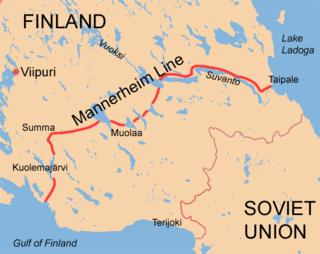 W
WThe Battle of Taipale was a series of battles fought during the Winter War between Finland and Soviet Union from December 6 to 27 1939. The battles were part of a Soviet campaign to overtake the Finnish Mannerheim Line of defence in the Karelian Isthmus region to open a route to Southern Finland. Despite their superiority in numbers the Soviet forces were unable to break through the Finnish defences.
 W
WThe Coastal Brigade is a brigade-level unit in the Finnish Navy. It is responsible for amphibious warfare, naval reconnaissance and special operations of the Finnish Navy. It is one of the three main units of the Navy, alongside the Coastal Fleet and Nyland Brigade.
 W
WFilin-class guard ships were a class of ships originally built in Finland as patrol vessels for the Imperial Russian Navy. With the withdrawal of Russia from the area, the ships went to other use.
 W
WFinnish Defence Forces International Centre FINCENT is a unit of Finnish Defense Forces located in Helsinki. FINCENT organizes courses, seminars and exercises with the European Union, United Nations and NATO.
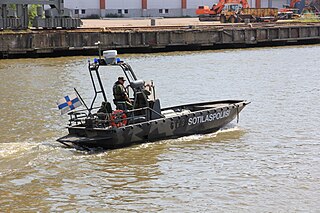 W
WThe G class, or "G-boat" also known as the Marine Alutech Watercat M8 landing craft is a type of vessel in use by the Finnish Navy and the Swedish Navy. The G-boat was originally designed for the Swedish Navy which ordered about 100 of them. It is primarily used for amphibious landings by, and transportation of, marines. It has a very low draught at high speeds which makes it ideal for amphibious assault even in shallow waters. It has a cargo capacity of 8 men or one metric ton.
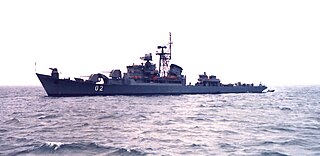 W
WHämeenmaa was a Finnish Riga-class frigate. The class was called the Hämeenmaa class in Finland since the ship had some unique modifications. The two 37 mm twin guns were also replaced with two 40 mm single AA guns in 1975.
 W
WThe Hamina Tattoo is a biannual military event in Hamina, Finland. It is the official military tattoo of the Finnish Defense Forces. It was established in 1990. The event has usually taken place in July or August. It was established as a result of an idea proposed in the early 1980s. The main venue of the tattoo has been Hamina Fortress since 1998.
 W
WJuho Henrik Heiskanen was a Finnish major general during World War II.
 W
WHelsinki-class missile boat is a class of four fast attack craft built for the Finnish Navy. All the ships were constructed at the Wärtsilä Helsinki Shipyard, Finland, and had Pansio as their homeport.
 W
WBaron Klas Kristersson Horn was a Finnish born, Swedish nobleman and Naval Admiral who fought for Sweden in the Northern Seven Years' War of 1563–1570.
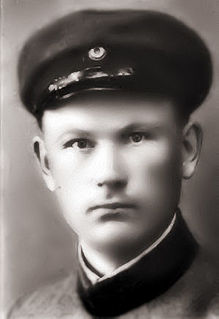 W
WAntti Isotalo was a Finnish Jäger, lieutenant, military recruiter, commandant and farmer. Isotalo served during World War I in the 27th Jäger Battalion as Hilfsgruppenführer from 1915 to 1918, the Finnish Civil War in 1918 in the Whites' side, the Aunus expedition in 1919, the Winter War as a commandant from 1939 to 1940, and the Continuation War as a lieutenant from 1941 to 1942. The song "Kuularuiskulaulu" tells about his reputation during the civil war. Isotalo was also an active member of the anticommunist far right Lapua Movement and its successor, Patriotic People's Movement between the late 1920s and the 1930s. He briefly participated in the politics; he was a candidate of the Patriotic People's Movement in the Finnish parliamentary elections of 1930 and 1936. After the wars, he was known as the local leader of Alko from Seinäjoki between 1945 and 1958.
 W
WThe Jurmo-class landing craft is a type of military transport in use by the Finnish Navy. The manufacturer Marine Alutech designates it as Watercat M12.
 W
WKaarlo Edvard Kivekäs was a Finnish general. Educated at Hamina Cadet School (1886–1890), he served in the Russian army from 1890 on, in Pamir area, later at World War I. After the Finnish Civil War, he returned to Finland. He was the Chief of Defence of the Finnish Defence Forces in 1919. Kivekäs is recipient of the Latvian military Order of Lāčplēsis, 2nd class.
 W
WTimo Pekka Kivinen is a Finnish general and the current Chief of Defence since 2019. Kivinen began his career as a dragoon, and was eventually promoted to Brigade Commander of the Karelia Brigade in 2011, Deputy Chief of Staff, Strategy in 2015 and Chief of Defence Command Finland in 2017.
 W
WKlas Horn (ex-Posadnik) was the flagship and an escort ship for the Russian Czar's yacht. Posadnik was built in Prussia in 1892 for the Montenegrin king Nicholas I. The ship was purchased by the Russian Czar after Nicholas' money ran out. After the Russian revolution, the ship was taken over by the Finnish Navy and renamed Klas Horn, after a 16th-century admiral. She initially served as a minelayer, but was rebuilt into a gunboat in the 1920s. Klas Horn ended her Finnish navy service in the 1930s and served as a mothership for sea surveying.
 W
WMatti Kurki (ex-Voivoda) was an escort ship for the Russian Imperial Yacht. Voivoda was built in Prussia in 1892 for the Montenegrin king Nicholas I. The ship was purchased by the Russian Czar after Nicholas' money ran out. After the Russian revolution, the ship was taken over by the Finnish Navy and renamed Matti Kurki, after a 13th-century legendary commander. She initially served as a minelayer, but was rebuilt into a gunboat in the 1920s. Matti Kurki was sunk as a gunnery practice target in the 1930s. She seems to have been lifted as some sources claim that she served as a floating anti-aircraft battery at Katajanokka, Helsinki, during the Winter War, armed with a 76 mm gun.
 W
WMurmansk Legion, also known as the Finnish Legion, was a British Royal Navy organized military unit during the 1918–1919 Allied North Russia Intervention. It was composed of Finnish Red Guards who had fled after the Finnish Civil War from the White dominated Northern Finland to Soviet Russia and of some Finns working on the Murmansk Railroad. The Legion fought the 1918 Viena expedition of Finnish White Guards and defended the Murmansk Railroad along with British troops.
 W
WNo. 16 Squadron, renamed No. 16 Reconnaissance Squadron was a reconnaissance squadron of the Finnish Air Force during World War II. The squadron was part of Flying Regiment 1 during the Winter War and Flying Regiment 2 during the Continuation War.
 W
WNo. 17 Replenishment Squadron, was a replenishment bomber squadron of the Finnish Air Force during World War II. The No. 17 Sqn was part of Flying Regiment 4.
 W
WNo. 28 Squadron, renamed No. 28 Fighter Squadron was a fighter squadron of the Finnish Air Force during World War II. The squadron was part of Flying Regiment 2.
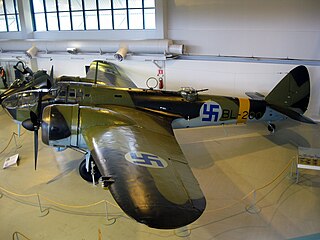 W
WNo. 42 Squadron, renamed No. 42 Bomber Squadron was a long-range bomber squadron of the Finnish Air Force during World War II. It was established in 1940. The squadron participated in the Winter, Continuation and Lapland wars as part of Flying Regiment 4, and was the only regiment in the squadron that exclusively operated Bristol Blenheim bomber aircraft. The squadron was abolished in 1952.
 W
WAnders Edvard Ramsay was a Finnish civil servant serving in the Russian Imperial Army, and served as the General of the Finnish Guards' Rifle Battalion from 1829 to 1838.
 W
WThe Naval Mine 2000 is an advanced naval mine developed by Patria for the Finnish Navy. It has stealth and advanced target-recognition capabilities and it is also being marketed elsewhere.
 W
WThe Battle of Suomenlinna was fought on 7–8 August 1855 between Russian defenders and a joint British/French fleet during the Åland War. It was a part of the Crimean War.
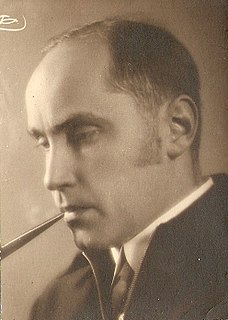 W
WLieutenant Colonel Paavo Susitaival, born Paavo Sivén, was a Finnish author, soldier and politician. Paavo Sivén and his brother, Bobi Sivén were prominent figures in the Finnish interwar Nationalist movement. Paavo had acquired his reputation smuggling volunteers to Germany to enlist in the 27. Imperial Jaeger Battalion; Bobi gained his by being the last alderman of Porajärvi municipality before the ratification of the Treaty of Tartu who shot himself rather than acknowledge the transfer of Porajärvi and Repola to the Soviet Union.
 W
WThe Taisto class motor torpedo boats or T class was a Finnish-designed class of motor torpedo boats, which saw service with the Finnish Navy during World War II.
 W
WPaavo Juho Talvela was a Finnish soldier and a Knight of the Mannerheim Cross. He volunteered in the Jäger Movement in Germany from 1916 until 1917. He was then a battalion commander in the Finnish Civil War. Afterwards Talvela was promoted to the rank of major, and was at the time the youngest major in Finland. In accordance with his nationalistic views, Talvela temporarily resigned from the Finnish Army to act as a leading figurehead for the Kinship Wars of the 1920s. He served as the Commander in Chief of the 1919 Aunus expedition.
 W
WViljo (Wiljo) Einar Tuompo was a Finnish lieutenant general during World War II. He commanded the Finnish Border Guard from 1935 to 1939, and from 1940 to 1941. During the Winter War, he was commander of the North Finland Group. During the Continuation War, Tuompo was the Chief of the Command Staff at General Headquarters in Mikkeli. He retired in 1945.
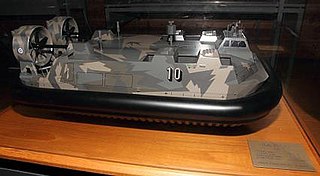 W
WTuuli was a hovercraft built for the Finnish Navy. Originally intended to be the lead vessel of a class of four combat hovercraft, she was never officially commissioned and after having been laid up for the most of her career, she was broken up in 2013.
 W
WThe Uisko class, also known as the Marine Alutech Watercat M11 landing craft is a type of vessel in use by the Finnish Navy. It is the predecessor of the Jurmo class landing craft. Uisko was the first water jet vessel of the Finnish Navy. It features excellent maneuverability and low draft suitable for shallow waters. It can be used for amphibious assault and transport of marine infantry. The uisko has a cargo capacity of 2.5 tons.